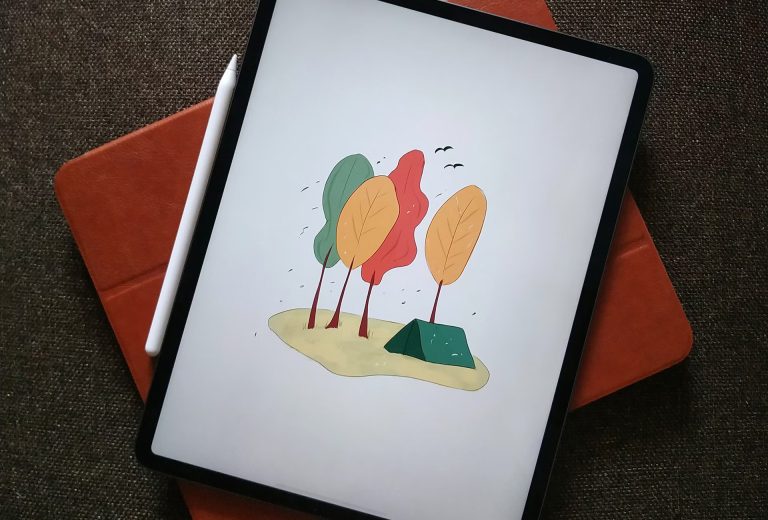Teaching is often likened to art; both require a touch of creativity to transform the ordinary into something extraordinary. And when it comes to teaching English in the dynamic landscape of Dubai, this parallel becomes even more profound. As the city evolves into a global metropolis, the demand for innovative English teaching methods, ones that can ignite young minds and fan the flames of language learning, is greater than ever.
Think about the last time you heard a captivating story. The characters, the plot twists, the highs, the lows – didn’t it all come alive in your mind? This vivid imagery, this engaged learning, is what today’s young learners yearn for. According to a study, students respond positively to a less formal and more interactive environment. And as English teachers, creating this environment becomes our canvas, our masterpiece in the making.
This article is your guide to ten creative methods to teach English in Dubai. We will explore how English teachers in Dubai are turning classrooms into creative playgrounds, using beyond-the-textbook methods to make English learning an exciting journey. Aimed at both primary and high school educators, this guide will walk you through innovative teaching strategies, real-life success stories, and the future of English teaching in Dubai. So, let’s put on our thinking caps and get ready to embrace the power of creative education. After all, we’re not just teaching a language; we’re shaping futures.
The Need for Creativity in English Teaching
The educational landscape of today has transformed from a one-size-fits-all approach to a dynamic, student-centered paradigm. Students in Dubai, much like their peers worldwide, are no longer passive recipients of knowledge; instead, they are active participants in their learning journey.
Fostering Engagement and Improving Learning Outcomes
Educational research consistently highlights the importance of an engaging learning environment in improving student outcomes. An independent study conducted by Israa Eibead Ajaj found that creative and interactive teaching strategies enhance not only student engagement but also their long-term learning and retention.
“Interactive teaching can also enhance the elements of memory and activation in the process of learning as it emerges students’ mentality through using various tools and activities.”
In this context, creative teaching methods breathe life into the learning experience, turning the tedious task of learning a new language into an engaging and enjoyable process. That is, the traditional ‘chalk and talk’ approach, with its monotone lectures and rigid lesson plans, can no longer hold the attention of our digital-native learners.
Catering to Diverse Learner Profiles
English teachers in Dubai cater to a diverse pool of learners – students of different nationalities, varied English proficiency levels, and unique learning styles. A traditional, textbook-based approach may not resonate with all these learners. Creativity in teaching methods allows for the adaptation of lessons to cater to this diversity, ensuring each student can connect with the content in their way.
Developing Essential 21st Century Skills
Beyond the academic realm, creative teaching methods foster essential 21st-century skills such as critical thinking, problem-solving, adaptability and collaboration. According to the World Economic Forum, these skills are crucial for students to thrive in the rapidly changing global landscape.
In the following section, we will venture into the actual classrooms of Dubai, discovering the creative English teaching methods that have proven successful in sparking student curiosity and love for the language.
As we delve into the creative teaching methods employed by English teachers in Dubai, we need to keep these objectives at the forefront – enhancing engagement, catering to diversity, and fostering future-ready skills. Only then can we truly move ‘beyond the textbook’ and chart a course towards innovative English teaching.
Top 10 Creative English Teaching Methods
Creativity in teaching English is not a new concept, yet it is an area that continues to evolve, particularly with the advent of new technologies. In Dubai, English teachers have been exploring numerous creative methods to make their lessons more engaging and effective. Let’s dive into some of these methods:
1. Storytelling: Penning down the Adventures of Knowledge
“Once upon a time”, there was the age-old practice of storytelling, and its charm hasn’t faded away. This magical method can be transformed into an effective pedagogical tool, especially in the realm of language acquisition. By integrating stories into lessons, we create an immersive environment that captures students’ imagination, making English learning a thrilling adventure rather than a dull task.
Suggested Strategy: A method that I often find intriguing is the power of storytelling as a tool for English language teaching. Think of a teacher in Dubai, whom we’ll name Mrs. Kapoor for this scenario. She cleverly integrates a variety of captivating tales, from folklore to science fiction, into her English lessons. Her students, captivated by the stories, delve into the intricacies of the English language and literature like adventurers eager to explore new territories. This illustrative situation highlights how storytelling can transform English learning from a mundane task into an exciting journey, stimulating imagination and fostering a deeper connection with the language.
2. Drama and Role Play: The Stage of Learning
When it comes to language learning, the world’s indeed a stage. Drama and role-play activities inject energy and enthusiasm into English classes, allowing students to walk in the shoes of different characters, experience varied situations, and learn empathy along with language skills. By immersing themselves in these theatrical experiences, students develop not only their language proficiency but also their creativity, confidence, and the ability to think on their feet. Through drama and role-play, the English classroom transforms into a dynamic and interactive stage where students can actively engage with the language and develop a deeper understanding of cultural nuances.
Suggested Strategy: When thinking about unique methods of English language instruction, a concept like the ‘History Alive’ program often surfaces in my mind. This could be a program within a school in Dubai, where students have the chance to reenact significant historical events. Picture the engaging atmosphere as they inhabit the roles of historic figures, bringing the past to life through their performances. Each line they deliver and every emotion they portray not only offers them a fun and memorable context to learn English, but also deepens their understanding of history. This approach demonstrates the effective use of drama and role-play to bolster language skills and enhance empathy. It’s about more than just learning language; it’s about using language as a vehicle for broader educational goals.
3. Gamification: Playing the Game of Words
Game on for English learning! By transforming learning activities into games, we can flip the switch on student motivation, engagement, and achievement in English classes. The idea of ‘learning through play’ is not just for kindergarten anymore. From vocabulary building games to interactive online quizzes, teachers are gamifying English lessons to motivate students and make learning enjoyable. A study conducted at a private university in the state of Rio Grande do Sul, Brazil, it was concluded that the results showed a change in the behavior of the gamified group showing a significant improvement in the accuracy of students with personality traits.
4. Digital Tools and Technology: Navigating the Tech-Savvy Seas of Learning
Technology is a tool that, when used creatively, can greatly enhance English teaching. By the way, in the digital era, technology is no longer just a tool but a bridge connecting students to countless learning opportunities. From interactive language apps to online collaboration platforms, digital tools are reshaping the landscape of English instruction. Many high schools in Dubai leverage technology to facilitate collaborative projects, encouraging students to research, communicate, and create digital content, thereby refining their English skills in a practical, modern context.
5. Project-Based Learning: Crafting the Towers of Knowledge
With project-based learning, students are the architects of their learning journey. They’re engaged in real-world tasks that have tangible outcomes, applying English skills in context. It harnesses the power of creativity by offering students the freedom to explore a topic in depth and express their understanding in innovative ways. Through collaboration and problem-solving, they not only learn to apply their English skills in a meaningful context but also learn to communicate effectively, giving their language acquisition process a practical dimension.
Suggested Strategy: Project-based learning is a fantastic teaching strategy to consider, especially when focusing on English language acquisition. Just think about a group of primary school students in Dubai embarking on a community project, such as creating a neighbourhood newsletter in English. As they brainstorm ideas, allocate roles, draft articles, and eventually print and distribute their polished newsletter, they would be applying their English skills in a meaningful, real-world context. This kind of experiential learning not only reinforces their linguistic abilities but also cultivates important life skills like teamwork and creativity. In my opinion, project-based learning exemplifies a multifaceted approach that makes learning a dynamic and interactive experience.
6. Multicultural Lessons: The Melting Pot of Languages
Dubai, a cosmopolitan city, offers a unique opportunity for multicultural lessons. English, as a global language, serves as a link among varied cultures. In teaching English, exploring multiculturalism doesn’t only make lessons more interesting but also instills respect and understanding among diverse students. Integrating elements from different cultures into English lessons can create a rich tapestry of learning experiences that expose students to a variety of perspectives and traditions. It allows learners to see English not just as a language, but as a bridge that connects cultures, fostering a global mindset and enhancing their intercultural communication skills.
Suggested Strategy: In a diverse and cosmopolitan city like Dubai, one teaching strategy that I have often pondered on is hosting a ‘Multicultural Story Day’ in an English class. Consider your students, coming from varied cultural backgrounds, eagerly sharing tales from their heritage. Their stories would paint a vibrant mosaic of the world’s cultures, right in your classroom. Such an interactive activity would provide them an opportunity to explore the richness of their cultures, while simultaneously refining their English language skills. This approach underscores how embracing multiculturalism can enrich English lessons and foster mutual respect and understanding among students. It’s an effective way to bring the world into your classroom, enhancing both the educational and the interpersonal experience.
7. Field Trips and Real-world Learning: Turning the World into a Classroom
The best learning often happens outside the confines of the classroom. Field trips serve as an excellent medium to link classroom instruction with real-world experiences. They expose students to various contexts in which English is used, allowing them to observe, interact, and apply their language skills in authentic settings. Whether it’s a trip to a museum, a news agency, or a theater, these excursions foster a deeper understanding of the language’s practical applications.
Suggested Strategy: One teaching strategy that often comes to my mind is planning a field trip to a local newspaper office. Imagine the ripple of excitement among your students as they get a first-hand experience of a bustling newsroom in Dubai. Witnessing the adrenaline-fueled environment where headlines are crafted and stories are brought to life can inspire them in countless ways. Upon returning to school, you could harness their enthusiasm by assigning them to write their own news reports, thereby extending their real-world experience into practical classroom learning. This strategy highlights the power of field trips in linking classroom instruction to the world beyond, making learning a more engaging and immersive experience.
8. Debate and Discussion Activities: The Arena of Thoughtful Dialogue
Debates and discussion activities bring the vitality of public discourse into the classroom, providing students with a platform to express their thoughts and learn the art of persuasive communication. They encourage students to critically analyze topics, formulate logical arguments, and present their views coherently, thereby honing their English language skills.
Suggested Strategy: If you’re seeking an effective teaching method that fosters critical thinking and sharpens language skills, consider initiating ‘The English Forum’ in your classroom. I’ve always believed that this could transform any classroom into a vibrant platform for intellectual exchange. Imagine students delving into animated debates on pressing global issues. The air would be charged with lively discussions, well-articulated arguments, and persuasive rebuttals. Such an intellectually stimulating environment would not only enhance students’ critical thinking abilities but also fine-tune their English language skills. Remember, debates and discussions play a pivotal role in enriching language learning and honing communication skills, effectively turning the classroom into a dynamic space for growth.
9. Music and Songs: The Symphony of Words
The rhythm and melody of music can make language learning an enjoyable and memorable experience. By integrating songs into English lessons, we can tap into students’ emotional engagement and enhance their language retention. This harmonious blend of language and melody allows students to associate words and phrases with catchy tunes, thereby promoting longer-term memory retention.
Suggested Strategy: One teaching strategy that has often sparked my interest is the integration of music into English lessons, through a tradition we might call ‘Melody Mondays.’ Envision a classroom in Dubai, buzzing with students’ anticipation of a new English song each week. With each tune, they learn vocabulary, rhythm, and grammar in a harmonious blend. As they sing along and tap their feet to the beat, the English language becomes more than just words on a page – it turns into an enjoyable and memorable experience. This idea illustrates how the captivating power of music can be harnessed to engage students emotionally and enhance their language retention. It’s an enjoyable method of turning English learning into a lively, rhythmic adventure.
10. Peer Teaching: Learning Together, Growing Together
Peer teaching fosters a sense of shared responsibility and collaborative learning. As students take the lead in teaching English lessons, they not only consolidate their understanding but also build crucial life skills like leadership and empathy. It fosters a community-centric learning environment where students can learn from each other’s unique perspectives and understanding, thus making the process of English language acquisition more collaborative and enriching.
Suggested Strategy: One of the teaching methods that comes to my mind is the initiation of a ‘Buddy Program’ in a middle school in Dubai. Through this program, older students could mentor younger ones in their English learning journey. This role reversal would not only help the older students consolidate their own understanding of the language, but also cultivate key life skills like leadership and empathy. Meanwhile, their younger counterparts would potentially witness considerable improvements in their English proficiency and self-confidence. This method illustrates the power of peer teaching in fostering shared responsibility and promoting collaborative learning.
With these ten creative teaching methods, the English language classroom transforms from a passive learning space into an active, engaging, and vibrant community of learners.
The Role of Teachers in Implementing Creative Teaching Methods
The success of creative teaching methods depends heavily on teachers, their willingness to adapt, and their skill in integrating these methods into the classroom. Let’s delve into the various roles teachers play in this context.
Embracing Change: Teachers as Catalysts of Creativity
The effectiveness of creative teaching methods is largely anchored on the adaptability and skill of teachers. Their roles are multi-faceted, extending from fostering a conducive environment for out-of-the-box thinking to embracing continual learning and adaptation. Teachers’ efforts in integrating technology and personalizing lessons contribute significantly towards making English lessons more interactive, accessible, and enjoyable.
Staying Current: The Need for Continuous Learning and Technological Integration
To stay abreast of evolving teaching strategies, teachers need to engage in continuous professional development. The UAE Ministry of Education’s “Teachers of the 21st Century” initiative is one such opportunity for educators to equip themselves with modern methodologies. Furthermore, technology can provide a dynamic spin to English lessons, with tools like interactive whiteboards and digital storytelling software paving the way for more immersive learning experiences.
Making it Personal: Tailoring Lessons to Individual Needs
Recognizing the unique learning styles of each student is key to effective teaching. By adopting creative methods to personalize lessons, teachers can make English learning more relatable and enjoyable for each student. Through such tailored teaching methods, English becomes less of an academic subject and more of a lively, interactive experience.
Conclusion: Embracing the Vibrancy of Creative English Teaching
Our journey through creative English teaching methods in Dubai has unveiled a spectrum of vibrant teaching strategies. These approaches, from storytelling and drama to gamification and technology, illuminate the learning experience and transform the classroom into a lively, interactive space.
Teachers as Navigators of Innovation
Teachers, the navigators of this creative shift, carry the responsibility of integrating these innovative methods. Their openness to change and ongoing professional development breathe life into these strategies. But remember, they’re not alone; schools and educational bodies provide essential support and resources for innovation.
Individual Symphony: The Beauty of Adaptation
There is no universal approach to teaching. Every classroom is a unique mix of learners, and the magic lies in finding the teaching methods that resonate with them. So, as we conclude, view this not as an endpoint but as a springboard into a world of creative possibilities.
Future of English Teaching in Dubai: A Canvas of Opportunities
Just as Dubai is renowned for its innovative spirit, its classrooms can become a melting pot of creativity, engagement, and dynamic learning. English teaching in Dubai’s future promises to be a vivid canvas, and we urge you, the educational artists, to explore your palette of methods and paint your own masterpiece of creative teaching.



